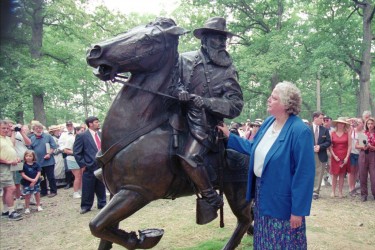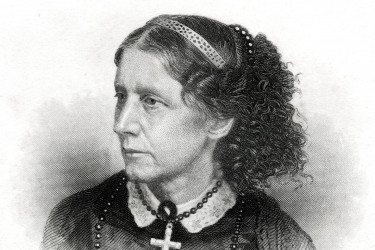In May 2021, the South Carolina Supreme Court heard oral arguments in a case to decide the constitutionality of the “South Carolina Heritage Act.” This law, passed in the summer of 2000, was part of a compromise that moved the Confederate battle flag from the top of the State House dome to a different, but still prominent, position on the State House grounds.
The flag was eventually removed entirely in 2015. But the Heritage Act served as a declaration that no other symbols of the Confederacy would ever again be removed in the state, at least not without a two-thirds vote by the state legislature. In its 20 years of existence the law has helped shield numerous symbols of white supremacy from removal.
The act, offered in the name of historical preservation, has continued to forestall the ability of local communities to make decisions about what their memorial landscapes should look like. And this matters, not only in South Carolina, but in numerous other states across the country with similar legislation that prevents communities from reckoning with — or even seeing — their collective histories.
Monuments and symbols not only tell history, but they hide histories as well. That’s the case on the grounds of the South Carolina State House, where the history of Reconstruction has been systemically erased from view.
Ironically, the State House itself stands as a monument to Reconstruction, though you will not find any plaque or sign on the grounds that says so. The building was under construction and unfinished on the eve of the Civil War. It was still incomplete when U.S. Army forces arrived on the banks of the Congaree River in February 1865. The massive fire that swept through the city at the end of the war — aided by burning cotton bales left by retreating Confederate troops, high winds and rogue Union soldiers — further delayed the occupancy of the building.
The first state legislature to sit in the newly (mostly) completed building did not do so until 1869. But, critically, this was the first legislature chosen by an electorate that included Black men. It was also the first state legislature in the history of the nation, then or since, that was majority African American in its composition.
During the short window of Reconstruction, from roughly 1869 to 1876, South Carolina’s state legislators, the majority of them Black and put in office by Black voters, accomplished a great deal. They established the state’s first public education system, expanded voting rights and experimented with meaningful land reform. In those years, the number of schools in the state grew from less than 400 to more than 2,600 and the number of enrolled students grew by a factor of 10. New colleges were formed to educate freedpeople and the state’s flagship institution, the University of South Carolina, became the only state-supported university in the former Confederacy to open its doors to students of all races.
It was also in the South Carolina State House that the Ku Klux trials of 1871-1872 were held. These trials represented the culmination of the most aggressive attempt by the federal government to protect the civil rights of Black Americans in the South during Reconstruction from organized, ongoing violence.
Following passage of the Enforcement Act of 1871, which empowered the president to deploy the U.S. military to combat those who conspired to deprive citizens of their civil rights, the Grant administration deployed the 7th Cavalry to put down the Ku Klux Klan. The level of violence that prompted this intervention is difficult to fathom. It included general intimidation, whippings and nighttime visitations by groups of armed and hooded men. There were also targeted political assassinations, such as the murder of state senator B.F. Randolph in 1868, and killings of Black men by White mobs.
This violence was meant to terrorize Black South Carolinians and convince them that the costs of exercising their newfound rights as citizens, whether that be voting, running for elective office or serving in the state militia, were simply too great. While the Grant administration was extraordinarily successful in stemming formal KKK activity, it was not able to dislodge the desire to overthrow democracy that animated it.
Many White South Carolinians were eager to oust the democratically elected government, to quell Black votes and to uphold white supremacy. This movement culminated in the 1876 gubernatorial election, when orchestrated violence and voter fraud ended South Carolina’s short experiment in biracial democracy.
The State House played a role there too, welcoming former Confederate general Wade Hampton III as the state’s new governor while a small garrison of U.S. Army troops marched out of the building, symbolically surrendering it to the victorious Democrats in April 1877.
This history, save the last detail, is largely absent from the grounds of the State House. There are no monuments to any of the individual Black legislators, no indication that it was here that the first and only majority African American legislature in the United States was seated. There is, however, an equestrian statue of Hampton, adorned in his Confederate Army uniform, but with his head intentionally designed to look as he did in 1877 when he arrived in Columbia to “redeem” the state for Whites.
The other great Reconstruction-era monument on the State House grounds is the Confederate Monument that stands prominently along Gervais Street. Fundraising had begun in 1869 and it was originally intended to reside elsewhere, for there was little hope that the Republican legislature seated that year would authorize its placement at the State House. By the time it was completed a decade later, however, the political tides had turned. Its unveiling in 1879 signaled that Reconstruction was over, that political authority had changed hands and that African Americans in the state would be tolerated only so long as they did not challenge the status quo.
On the grounds, there is also the African American Monument, erected at the turn of the 21st century, which hints at some of this history. A solitary panel, with depictions of Black men lining up to vote and two nameless Black legislators, stands as the only counternarrative of Reconstruction on the grounds. The 12 panels that comprise the monument are forced to bear the weight of the entire sweep of the African American experience in the state. Those who designed it most likely knew they would not have the opportunity to populate the grounds with dozens of statues as the monument builders of the previous century had done. And so the story of Reconstruction continues to speak only in whispers, while the counterrevolution that violently overthrew it dominates the landscape of the State House grounds.
Meanwhile, the Heritage Act, and other laws like it, masquerade as historical preservation. They pretend to preserve the past and protect against the “forgetting” of history. In reality, they serve only to maintain the status quo. They do not guard history, but instead preserve the historical revisionism of those who, in past generations, had the power and authority to impose their interpretations on the landscape. They leave us beholden to the ghosts of those long dead and prevent local communities from making their own decisions about what the memorial landscape should look like today. And, as in the case of Reconstruction, they impose a legacy of historical amnesia that prevents us from reckoning with our past in a way that could help us to move forward in the future.










